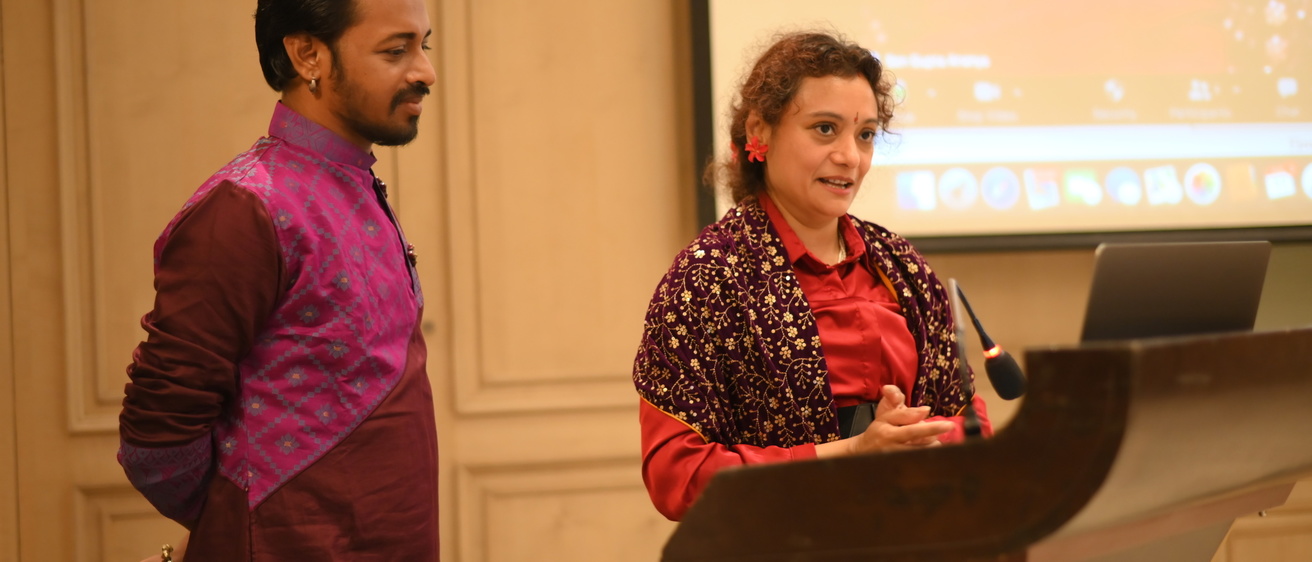A University of Iowa engineering professor is testing whether a classical Indian dance can provide clues to unlocking dynamic mysteries in space and the oceanic environment.
Ananya Sen Gupta, associate professor of electrical and computer engineering, uses geometric principles to develop artificial intelligence (AI) algorithms that can recognize and classify changing patterns in the ocean and space.
For example, humans instinctively can identify that a dog wearing a lion’s mane costume is still a dog. The human brain has been trained for millions of years to separate important information from the unimportant. Computers struggle with this computational function called feature classification.
Sen Gupta’s team creates algorithms to perform feature classification, which could have a range of public benefits. For example, the AI could help separate sound scattered by the natural oceanic environment and acoustic reflections from a forgotten shipwreck or an abandoned plastic bottle buried in the seafloor.
Another example from her research involves “chorus waves” in the Van Allen Radiation Belt, a radiation field surrounding Earth discovered by UI Prof. James Van Allen in 1958. Chorus waves cause trapped electrons to rapidly accelerate, shooting bolts of energy at high velocity. These electrons threaten to short circuit space craft and potentially endanger the lives of astronauts that come in its path.
“The algorithm needs to be intelligent enough to recognize what a chorus wave looks like even when the pattern changes,” Sen Gupta said.
This is where dance comes in.
Sen Gupta, a self-described art lover, found the YouTube channel of Subhajit Khush Das, an artist and choreographer from Kolkata, India. Das performs and teaches Bharatnatyam, an ancient classical Indian dance that started out as a temple dance and has become mainstream. Das also performs other contemporary and neoclassical dance styles, and is well-known for his researched dance movements that add fluidity to the movement of classical dance forms.
In Das, Sen Gupta recognized an innate understanding of geometric principles through his dance. She saw potential to meld art and science.
Sen Gupta “can’t ask the ocean to hit rewind and replay” or a spacecraft to make a U-turn to collect more data, but she can ask Das to repeat the same choreographed movements. He can also perform the movements in dark settings, in shadows, in the rain, at different speeds, and so on.
“Dance overlaps with mathematics and geometry,” Das said. “The performance changes each time we change our stage – from a circular stage to a rectangular change. As we started talking, I could see how art and science could work together.”
Sen Gupta’s hypothesis is by teaching the algorithm to identify a dancer as he or she flows through movements of an intricate dance, it can improve the accuracy of AI recognizing changing patterns in space or the ocean.
Sen Gupta’s research team, consisting of herself and her doctoral student Andrew Christensen, tested her theory using a commercial image identification product. First, using the product out of the box, they captured footage of Das performing the dance wearing traditional garb, which is long and flowing. They then ran the demonstration again, this time training the product with limited but detailed annotations based on dance data Das provided.
In side-by-side videos of the results, the unaltered commercial product rendered broken images with missing legs or other body parts because the product could not distinguish between the dancer and the background.
The version trained with the limited but detailed annotations, however, was able to recognize the dancer. The important finding was that extensive training was not needed to achieve remarkable improvements.
At a recent demonstration hosted in Kolkata, Sen Gupta showed how the dancer's features can serve as a geometric proxy for features she typically studies in her space science work. This data will make it feasible for Sen Gupta to modify and test AI algorithms in her research.
Sen Gupta is currently gathering robust preliminary data in hopes of applying for grant funding to continue the research.
Virtual and Augmented Reality have great potential to increase access to dance performance and teaching
Sen Gupta believes art can benefit science. She also believes science can benefit art.
Andrew Christensen, an electrical and computer engineering PhD candidate under the mentorship of Sen Gupta, is working with Tyler Bell, a UI assistant professor of electrical and computer engineering who specializes in 3D video capture and human-computer interaction, on another aspect of the project. They aim to bring a virtual and augmented reality component to Das’s dance.
Virtual and augmented reality have great potential to expand access to who can enjoy dance performance, such as people with mobility challenges, as well as improving how dance is taught.
“I am very lucky this is being tried on me,” Das said. “This will only enhance me as a performer and teacher.”
